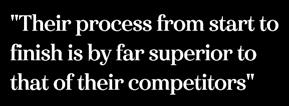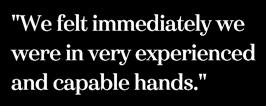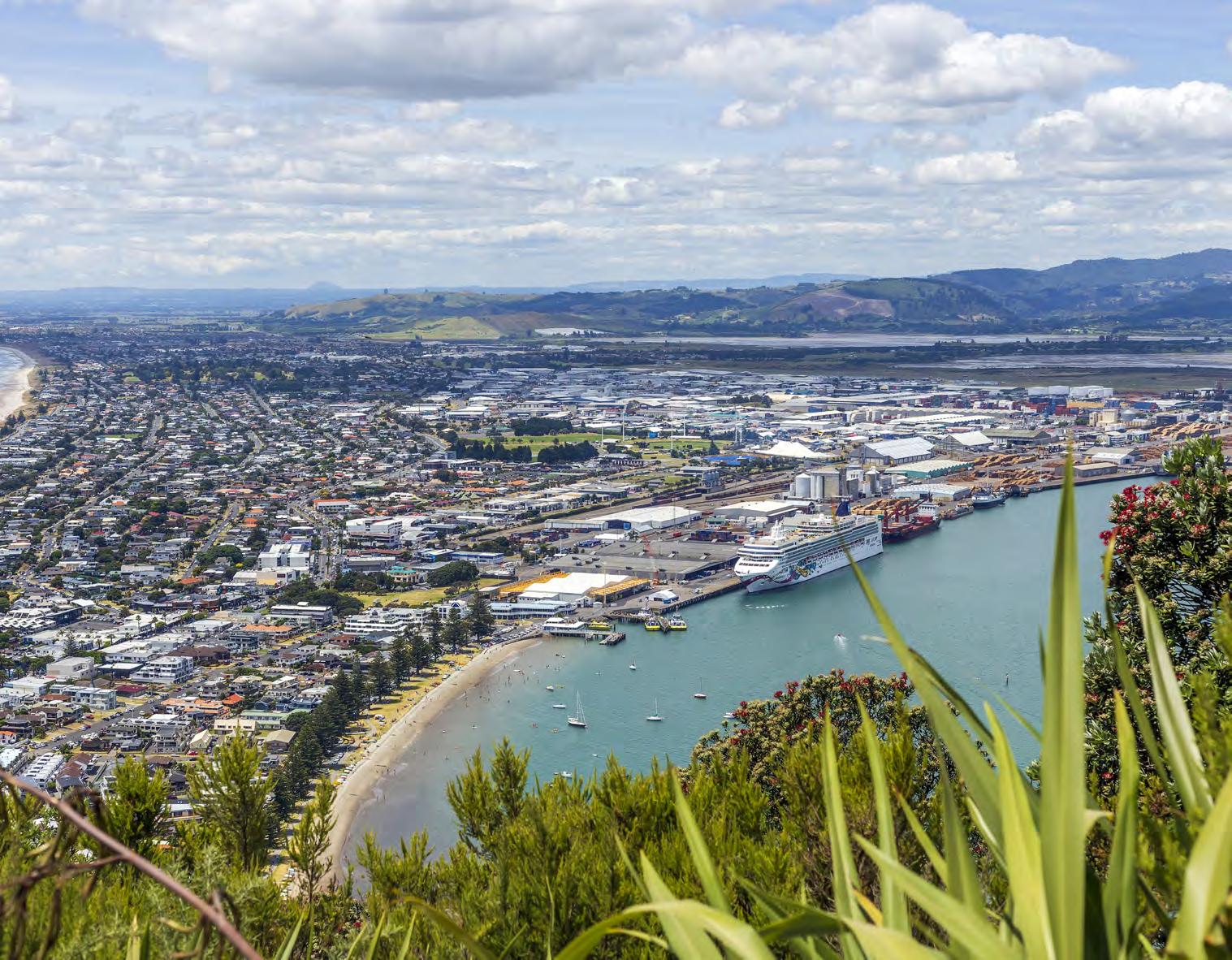

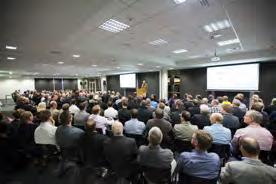




















































Bay of Plenty raised innovator and entrepreneur Angus Robson is proud of his latest creation’s link to the region, and what it is contributing to Eastern Bay of Plenty’s future.
RBy RICHARD RENNIE
obson grew up in Edgecumbe, but has forged an international career in developing new technology and equipment for the quarry and mining industry, including founding the Matamata-based company Rocktec.
Among his many achievements, Robson can also claim building the world’s largest trebuchet, a kind of medieval catapult which set a new world record when it hurtled a massive steel block 15 metres in 2004.
Not counted, but even more spectacular, was the Toyota Corolla that was hurtled 100 metres by the enormous device. But his latest effort will deliver some more tangible benefits to the Bay of Plenty, despite its daunting brand name – The Terminator.
The Terminator
Fitted to the front of a heavy excavator, The Terminator is a high energy rock breaker that has proven instrumental in helping accelerate the pace of construction at the Opotiki Harbour development project.
The project was the recipient of a $79 million Provincial Growth Fund and requires 500,000t of crushed rock to help construct the seawall approaches to the harbour project.
For Robson, the project has proven an ideal opportunity to locally showcase a machine he spent over $2 million and five years developing.
Four export sales of The Terminator have already been completed,

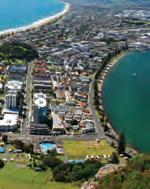


including two to the United Arab Emirates and two to a vast Canadian iron ore mine.
Typically, mobile rock breaking equipment is a hydraulic hammer fitted to an excavator, using technology that has been largely unchanged in over 40 years.
But combining some smart engineering and patented IP, Robson’s device can deliver an impact 10 times greater than conventional mechanical breakers, and is up to 15 times more productive than those methods.
In action, the machine delivers a precise, controlled percussive blow of up to 4000 tonnes to the rock surface, yet puts minimal demands on the machine and its operator.
“There is no movement that sends juddering, wearying actions through the excavator itself, and the force is multiple times more focused and precise.”
Rotorua reaps tough rewards
The Terminator is currently employed at Rainbow Quarry, off State Highway 38 south east of Rotorua. The volcanic andesite rock destined for the harbour project is among the toughest in the North Island.
Quarry manager Brian Nicoll said the machine’s productivity means the quarry is now transporting 12 truck and trailer units a day of the broken and sized rock to the Opotiki harbour site.
John Galbraith, project manager for the Opotiki harbour project, said the Terminator has proven invaluable in providing exact sized rocks for the project.
“Sizing is critical, requiring five different diameters of rock, the Terminator can break the rocks down to the required sizes, that’s difficult to do for most quarry equipment.”
Robson is proud to be able to keep not only the employment of The Terminator local, but also its construction. Kawerau Engineering is playing a key role in assembling and building the machines.
Kawerau Engineering owner Greg Adams says The Terminator fits well with the company’s specialist engineering focus. “Some of what we do is quite Formula-1ish, quite technical, so it fits in well with our skill set.”
For Robson the future sales prospects of The Terminator are looking very positive.
“There are many sites around the world in need of a high energy machine like this that significantly reduces the number and size of excavator machines needed on site. We can also use it for recycling solid steel that nothing else can break economically.
“In two years of steel breaking in Russia with just two hammers we saved more than 700,000 tonnes of CO2 – the same amount of CO2 that the entire transport fleet of NZ emits in three weeks.”
“If we did not have it operating, with this tough rock we would be lucky to be doing three truckloads a day, and this project has required a constant supply of rock every day for two years.”










www.bopbusinessnews.co.nz
PUBLISHER
Alan Neben
Ph: 021 733 536
Email: alan@bopbusinessnews.co.nz
EDITOR
David Porter
Mob: 021 884 858
Email: david@bopbusinessnews.co.nz
PRODUCTION
Copy/Proofs/Graphic Design
Times Media – Clare McGillivray Ph: (09) 271 8067
Email: clare@times.co.nz
ADVERTISING INQUIRIES
BUSINESS DIRECTOR
Pete Wales
Mob: 022 495 9248
Email: pete@bopbusinessnews.co.nz
ELECTRONIC FORWARDING
EDITORIAL:
News releases/Photos/Letters: david@bopbusinessnews.co.nz
GENERAL INQUIRIES: info@bopbusinessnews.co.nz
Bay of Plenty Business News has a circulation of 8000, distributed throughout Bay of Plenty between Waihi and Opotiki including Rotorua and Taupo, and to a subscription base. www.bopbusinessnews.co.nz
Bay of Plenty Business Publications 309/424 Maunganui Road, Mount Maunganui, 3116
Bay of Plenty Business Publications specialises in business publishing, advertising, design and print media services.
One of the interesting reveals of our cover story this month on the region’s housing shortage woes, to me, was that I had not realised to quite what extent the region has been victim of its own success.
As noted local developer Scott Adams of Carrus Corp points out, a particular problem for the Bay of Plenty goes back to the high cost of land. “You’ve got very rich horticultural soils here and people are starting to pay big bucks for canopy ha,” he says. “Then you have to get it rezoned, which takes time and involves a minefield of national policy statements to be navigated.”
All of which makes urban development hard work. And even though I’ve been in Tauranga for more than a decade, I hadn’t fully taken into account just how the Bay and its beautiful beaches are also becoming hamstrung by the region’s very appeal.
Nigel Tutt, chief executive of Western Bay of Plenty development agency Priority One, notes that for the last six years the growth rate has been
around double the national average.
And he reinforces the view that the Bay, despite its appeal, simply isn’t an easy area to develop in, with its multiple peninsulas and low-lying areas. As well, the government is placing increasing requirements on developers to carry out major abatement to protect against future flooding and other incidents.
We trust our cover story helps readers to learn more about the causes of the housing shortage phenomenon that is hurting the region’s development.
Meanwhile, a recent news report has revealed that New Zealand exporters are having increasing problems in getting their products overseas. According to the latest ExportNZ Export Barometer, more than half of exporters are
failing to get shipping space.
There are now growing concerns in the business community that New Zealand may get left behind as the world opens up. Assuming that it does open up, of course.
The most common barriers are cost and availability of transport and logistics, which are being experienced by 78 percent of those surveyed, up from 66 percent last year.
The inability to travel because of the pandemic, with resulting closed borders and MIQ restrictions, was cited by 52 percent of respondents.
Recall if you will that the Bay is one of New Zealand’s leading export centres. Many in the business community are anecdotally reporting the problems being suffered by exporters, with standard items, such as containerisation costs, having soared.
According to the ExportNZ
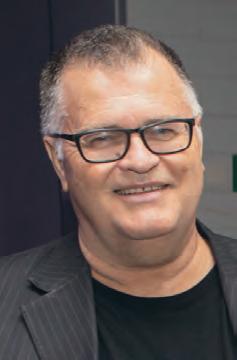
survey, which took in 300 exporters, businesses are adjusting to the difficulties with 51 percent reporting an increase in export orders. That’s up from 36 percent last year and 49 percent pre-pandemic. However, 32 percent reported a fall in export orders, down slightly on last year. According to the report, the impact of global freight congestion is “staggering” for Kiwi businesses with increased logistics costs, delayed transport and some exporters simply unable to get shipping space.
“Inspired” is how leading national home builder Platinum Homes describes the Government’s announcement on freeing up urban land for housing.
“We desperately need a circuit breaker to get more Kiwi families into homes and this could well be it,” says Chief Executive Dave Andrew.
His company alone has plans to build 300 homes across the country in the next year – a number that could easily double – if only there
was more land available.
“This initiative, while it will obviously take time to be implemented, is just what the country needs.
“If we could bundle this up with some improvements to building consent timelines and also address some of our current supply chain issues then I see the potential for some real progress in the home building sector,” Dave Andrew says.
Platinum Homes currently has more than 100 homes waiting on building consents

I don’t think [housing] prices will fall, but you’ll have a better range to choose from by summer.” – Tony Alexander
from councils around the country.
“As if that wasn’t bad enough, we also face delays for some timber products, internal wall linings, tapware and other products, and increasing costs of our building supplies.
“In some cases that means we need to steer clients towards more available choices. In other cases, where a client has their heart set on a particular feature, we have to explain that there could be
a wait of several months, until we get supplies into the country or out of a New Zealand factory.
“My only hope is, having reached this agreement between the Government and the National Party, that each and every politician in the House will do their bit to make sure that the momentum that has got us this far will carry on until the legislation is enacted. Only then will New Zealand be able to reap the benefits. This is a great start.”
Development is not easy. You’ve got some pretty low-lying areas as well as peninsulas. And we’ve also collectively failed to build up as well as out.” – Nigel Tutt


market update (for the quarter ended 30 September, 2021)
Since the lows of the Covid crash in late March 2020 it has been an exceptional run for global share markets. That run hit a significant speedbump in September.
With many markets near record highs and valuations generally lofty relative to history, they were susceptible to a pullback. To emphasise just how unusually calm it had been, until the last day of September (when the run was broken) it had been 236 trading days since the MSCI World Index had seen -five percent drawdown. That’s the second longest period in the past 25 years. Markets can sometimes be volatile, but for most of the past year (until recently) they haven’t been.
New Zealand market bounces despite Covid lockdowns
After being a laggard to global markets, the New Zealand
share market had a strong quarter, boosted by companies reporting healthy results in August.
Some may be surprised the strong performance has come at a time when we’ve been hit with the first Covid-19 community outbreak in six months, and parts of the country remain in lockdown.
Lockdowns will impact economically exposed sectors and companies.
The good news for investors, however, is the New Zealand market is dominated by defensive companies in sectors like healthcare, utilities, telecommunications, and consumer staples. The earnings of these companies are less affected by the economic environment.
The silver lining of the outbreak is that it’s been the wake-up call for many New Zealanders to get vaccinated.
We no longer hold the inauspicious title of being the least vaccinated country in the OECD. This time round, New Zealand had little choice

around how to respond to the Covid-19 outbreak. Widespread vaccinations are the only way to provide countries with broader choices about how to manage Covid-19 in the future.

Interest rate rises are coming
>
Investment Adviser with Forsyth Barr Limited in Tauranga, and an Authorised Financial Adviser. Phone (07) 577 5725 or email brett.bell-booth@forsythbarr.co.nz.
New Zealand has been one of the first countries in the developed world to raise interest rates in a post-Covid world. On 6 October it lifted the official cash rate (OCR) by 25 basis points to 0.5 percent. Our economy is facing pent-up demand and capacity constraints – the housing shortage being the most obvious example – from the tidal wave of migrants over the last eight years. In recent years, that same migration kept a lid on wages.
But now, with borders shut, capacity pressures are biting and inflation risks are rising. Closed borders are also driving up import costs. New Zealand is distanced from key trading
partners and, as such, global supply chain constraints and rising freight costs have had an even greater impact here than abroad.
Furthermore, unlike other countries New Zealanders have been breaking out the credit cards. Much of our strong economy is being funded by rising household debt for which we’ll eventually face a cost.
The market is pricing that by May next year, we will see three more rate hikes lifting the OCR to 1.25 percent, but the environment remains fluid and subject to change. The creep of the Covid-19 delta variant south of Auckland, uncertainty over how long level 3 lockdowns will be imposed, and growing questions around the pace of the global economic
recovery will all influence the RBNZ’s trajectory from here.
A return to (normal) volatility
Recent volatility has broken a period of unusual calm in markets. Whilst we remain comfortable retaining a healthy weighting of risk assets (shares, property) in portfolios, we also believe the easiest gains in this cycle are likely behind us and that future returns will be lower than what we’ve seen over recent time.
This column is general in nature and does not take any of your personal circumstances into account. For personalised financial advice, contact Forsyth Barr for an overview of the services we can provide.
Picture this: You’re a local NZ business and you’ve just successfully defended an opposition to registration of your trade mark before the Intellectual Property Office of New Zealand (IPONZ). As a result of your win, the Assistant Commissioner has awarded you $2850 in costs.
The award is not a lot compared to what you’ve spent, but, hey, at least it’s something. Your account details have been sent to the losing party and… nothing. Silence. Your lawyers send a reminder for payment and, again, silence. The losing party has shown you its digitus impudicus 1 Frustrating, right? Annoying – sure. Especially when your lawyer tells you that the High Court process to recover the meagre sum awarded by the Assistant Commissioner will cost more than the award itself.
What’s worse in your case is that the loser is based overseas, so in addition there’s the whole process – and cost – of trying to enforce the court’s order for payment in the loser’s jurisdiction. Arrghh!!!
In these circumstances, your victory can seem a very Pyrrhic one, and rightly so.
Fortunately, there is something parties in trade mark, patent and design proceedings before IPONZ can do to mitigate the potential for non-payment of costs. That ‘something’ is obtaining security for costs.
The Trade Marks Act 2002, the Patents Act 2013 and the Designs Act 1953 all have provisions2 which enable the relevant Commissioner to order a party to pay security for costs. Section 167 of the Trade Marks Act 2002, for example, states: 167 Commissioner or court may require security for costs
1. The Commissioner or the court, as the case may be, may require a party to legal proceedings under this Act to give security for the costs of the proceedings if satisfied that –(a) the party does not reside, and does not carry on business, in NZ; or (b) there is reason to believe that the party will be unable to pay the costs of the other party if unsuccessful in the proceedings.
2. If the party does not give the security required, the Commissioner or the court may treat the proceedings as abandoned by the party and determine the matter accordingly.
Looking at the scenario I started this article with, it would have been prudent for the winner to have applied for an order for payment of secu-

> BY BEN CAIN
Ben Cain is a Senior Associate at James & Wells and a Resolution Institute-accredited mediator. He can be contacted at 07 928 4470 (Tauranga), 07 957 5660 (Hamilton), and benc@jaws.co.nz.
rity for costs under section 167(1)(a) if it could establish the other side did not reside, and did not carry on business, in New Zealand. In those circumstances, the Commissioner should have ordered security for costs unless there was something in the surrounding circumstances that suggested the Commissioner should not have granted the order because it would be unjust on the opponent.3
Applying may also have made the other side think twice about pursuing the opposition
– or at least encouraged them to negotiate an acceptable resolution.
Despite the apparent ease with which orders for payment of security may be obtained against overseas parties (I stress ‘may’), orders for payment of security in these circumstances are seemingly rare.4 This is surprising given the number of proceedings involving overseas based vs NZ based parties, and indicates a remarkable amount of trust on NZ based parties’ behalf that their opponents will pay up if they lose. Either that, or applying for security for costs in IPONZ proceedings is an under-utilised tool. I think both are probably correct.
1.
There’s no shortage of great ideas in New Zealand. But for an innovative bunch, we’re not the best at realising the full potential of our innovations, particularly when exporting them.
At James & Wells, we can identify your competitive edge, offer business strategies for specific markets and help you own and leverage your intellectual property to ensure no one steals the fruit of your labour.

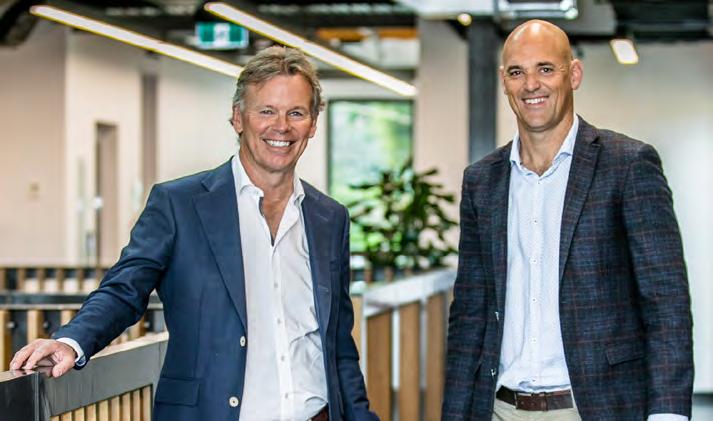

The Bay of Plenty is by no means alone in facing a critical housing shortage – nationwide home buyers have been facing many of the same issues. But what seems to be an especial problem in the Bay is that the shortfall is very much a mixture of two key issues.
One is the increasing attractiveness and prosperity of the area for incomers, and other is the difficult topography across the region, which has made housing growth expensive and difficult to produce.
By DAVID PORTER
As developers note, it isn’t easy to get new projects going here and some are deeply critical of past councils for not moving aggressively enough. There are some who in fact have welcomed the Labour government’s decision to put commissioners in charge of running Tauranga City Council, and many applaud the commissioners for making hard decisions about the future that had been put off for too long.

One of New Zealand’s most astute commentators on the property sector, Tony Alexander, worked as chief economist of the BNZ for 26 years before resigning in 2019 to hang out his own shingle. A widely quoted economic commentator, Alexander, recently addressed the Tauranga Property Investors Association in a Zoom seminar, and said that he expected house prices to continue going up at least into next year.
“If you can get your foot on the ladder then do so,” Alexander said he advised young people. “I don’t think prices will fall, but you’ll have a better range to choose from by summer. I think there will be some extra vendors coming forward over 2022.”
Alexander said he believed some house owners would be hoarding, but a lot would be thinking about selling. “The interest rates will go up a bit, and the sentiment will change,” he said.
“It’s that sentiment that has driven prices
up so much.” However, Alexander said, he believed prices might be flattening out and that house prices would be more interesting for buyers by the second half of next year.
Major reasons for price rises
Nigel Tutt, chief executive of Western Bay of Plenty development agency Priority One, reinforced the view that there were two major reasons why housing growth rates had been so high.





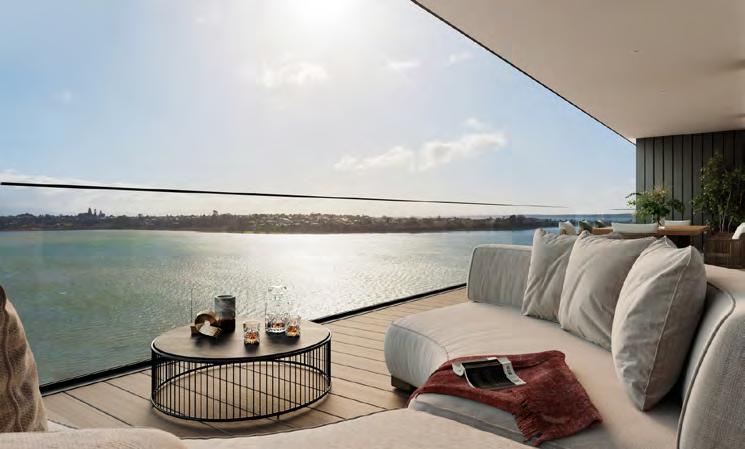
The February 2021 Edition of the BOP Business News featured Luxridge Apartments, Tauranga’s newest and most luxurious apartment project. Eight months on we contacted the developer and discussed the ups and downs of developing properties during a global pandemic. Apart from the usual feedback about Resource Consent/Resource Management delays with the local council, SSLA directors Kelly Cotter and Rob Gartshore expressed their views on meeting today’s challenges in an ever-changing global market.
First the good news, apartment living is being embraced by the Tauranga community as well as the wider New Zealand housing market. Luxridge has a mix of purchasers from Tauranga, the Waikato, Auckland, Wellington, and the South Island. Sales continue to exceed expectations with 14 of the 24 apartments sold. The developer is in negotiations with three more prospective purchasers but Auckland’s Level 3 restrictions make finalizing those sales difficult.
Slight changes to the architectural drawings allow for better use of modern building technology. The façade engineers’ suggestions ensure a warm, dry environment in winter months with crisp, fresh living throughout the spring and summer. Luxridge Apartments are unique in that the building has an on-site fitness centre. Purchasers looking for additional workspace (without the need to leave the building) will find separate office/hobby rooms available; these units are adjacent to the fitness centre on Level A and two of the five units are sold.
Many purchasers have opted to purchase an additional storage unit and there are three different size storage units to choose from.
The not so good news. As anyone keeping up with the over stretched global supply chain knows all too well, costs for



“For the last six years the growth rate has been around 3.5 percent a year – double the national average,” he said. “If you grow that quickly you’re going to have challenges.”
The second reason was simply that the Bay wasn’t an easy region to develop in.
“It’s full of peninsulas and the geography doesn’t lend itself to your good old city type development,” he said.
“Development is not easy. You’ve got some pretty low-lying areas as well as peninsulas. And we’ve also collectively failed to build up as well as out. There’s no real incentive to change away from the traditional style of housing, even though the infrastructure costs are far too low.
building materials and appliances continue to rise. Raw materials and shipping costs are at their highest levels in over 40 years. In order to meet feasibility requirements, Luxridge has instigated price increases to meet the cost blowouts. The project remains on track with demolition, site clearance, and sub-structure work expected to begin in the first half of 2022. Cotter and Gartshore acknowledge that SSLA is in the same boat as all New Zealand developers. Developers must keep the construction schedule reasonable and only promise what they can deliver. The Luxridge core team of First Principles Architects, WSP Engineering, CMW Geotech, Urban Lounge Interiors, the Longview Group, and Fluid Engineering Consultancy remain dedicated to meeting today’s challenges. The Luxridge Apartment development that BOP Business News featured eight months ago remains the Luxridge of today, “Apartment Living that Aspires to New Heights”.
The finished product promises to be a new landmark in Tauranga apartment living. The Tauranga CBD will benefit greatly from Luxridge and all other city apartment projects that bring life back into the city centre.
For floor plans and a list of sales, visit www.luxridge.co.nz
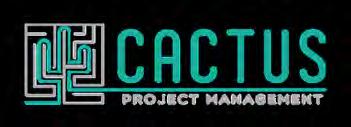
“To build more high rises, the planning roles will need changes. But the costs for a developer are pretty much the same. Land is the big problem. Right now we can’t provide the capacity needed for what I believe is a very reasonable population growth estimate.”
Perfect storm of problems
Scott Adams, who heads up one of the region’s biggest property developers, Carrus Corp, told

the Bay of Plenty Business News there were a number of conspiring events coming together as a perfect storm. “The first one is political. We’ve had decades of under-investment.”



Adams was dismissive of the past efforts of many city councillors, stating that they tended to be wedded to supporting the general view of older house owners and voters calling for “fixed rates for life”.
‘You end up with these guys who have no commercial experience, no qualifications and have never taken a risk,” he said. “Some of them can’t read a balance sheet. You end up asking people to run a multi-billion dollar city, but there’re no meaningful decisions getting made.”
Certainly not when growth and infrastructure are concerned, he said. Yet he felt the new commissioners had made some really tough decisions to move things ahead.
Adams is one of the leaders of the newly formed – and somewhat property-centric –Urban Task Force, which has recently sent off a letter to local government minister Nanaia Mahuta. It commended her for putting the commissioners in place. Adams also said he endorsed sentiment being voiced about extending the commission’s term.
“I want us to go back to a democracy, but we’re not ready for that yet so we need another three years with these guys at the helm,” he said. “And hopefully that period will start to
attract better quality elected members who can actually govern the city the way it needs and deserves to be.”
Need for more flexibility
Adams noted that one of New Zealand’s fundamental flaws was that local government was responsible for the planning and implementation of trunk infrastructure. In many other countries, it tended to be the central or state government that put the infrastructure in the ground. In addition, the Local Government Finance Act caps the amount of money that can be borrowed. “That will have to change and I think the government has realised that, and that’s why you have all these reforms coming in to change it.”
Adams takes the view that a particular problem for the Bay of Plenty goes back to the high cost of land. “You’ve got very rich horticultural soils here and people are starting to pay big bucks for canopy ha,” he said.
“Then you have to get it rezoned, which takes time and involves a minefield of national policy statements to be navigated.”
His view was that it was difficult to find a
Turn to page 10
ryce Heard, chief executive of the Rotorua Chamber of Commerce, said there was a definite shortage of houses in Rotorua.
“We’ve got to build 6,000 houses in the next 10 years, according to our numbers. But we’re currently building at the rate of about 260 a year, so we’ve got to get that up to 600 a year – and all of them are needed now.”
Heard noted that one of the key elements of Rotorua topography was that the region drained into the lakes, meaning problems with storm water etc to be considered by developers.
“Whenever you develop more land you have to deal with these infrastructure issues,” he said.
“The existing cost of abatement is more than elsewhere, which makes it difficult to bring on big new blocks for urban development and Rotorua has been quite static in population for nigh on 30 years.
“But over the last decade we’ve seen a



We’re seeing increased demand from both local and out of town buyers who are seeking a change of lifestyle and the kind of freedom you can only find in the Bay of Plenty. Right now is the perfect time to bring your property to the market and capitalise on the newfound need for change. Combine Bayleys’ first class marketing strategies and outstanding Auction results with our extensive buyer pool and you’ve got a recipe for success.
Get in touch with Bayleys today.
Bayleys Tauranga 07 578 2118 | info@bayleystauranga.co.nz
Bayleys Mount 07 572 1580 | info@bayleysmount.co.nz Bayleys Whakatane 07 307 2710 | info@bayleyswhakatane.co.nz
Bayleys Rotorua 07 349 3210 | info@bayleysrotorua.co.nz
Karl Gradon, general manager for strategy at Toi EDA, noted that while the housing situation was bad in Tauranga and Rotorua, in fact the two worst towns in the region statistically were Kawerau and Opotiki.
“You will not find worse conditions in the region for overcrowding and housing shortages,” he said.
“It’s absolutely critical in the Eastern Bay. We have the leading rate of rheumatic fever in the country, which is a key indicator for overcrowding and dampness.”
Gradon said he felt there was a huge challenge in the region, but disagreed with Kainga Ora’s decision to continued investing in Tauranga and Rotorua to try and resolve housing challenges.
“We have had extensive discussions with them,” he said. While they were said to be considering the difficulties in Opotiki, there was no sign of immediate change, he said.
“There’s a huge amount of [housing] work especially with the amount of work to be done and the huge jobs being created in the Eastern Bay,” said Gradon, who estimated there could be 7000 jobs created by 2030.
“We don’t have constructors to build them and that means we have to attract talent,” he said. “We’ve already seen where projects are bringing people home, but they don’t have anywhere to live.”
Gradon noted that Opotiki was a large centre of new kiwifruit developments.
“We’re asking central government to come to the Eastern BOP and provide a total support package to build new resi-

dent housing in outlying rural areas rather than focusing on problems that are real, as in Tauranga and Rotorua, but not as systematic.”

way through national policies on issues such as the environment in order to carry out urban development.
In the end developers might be best off to pay massive premiums for land that is already zoned residential. “You still pay massive amounts of money and just sit there land banking for years,” he said.
Smart Growth to play key role
Peter Winder, who recently tendered for and took over as chairman of Smart Growth from Bill Wasley, who was appointed one of the Tauranga commissioners, said there were a number of property rising issues facing the region.
Winder said these were “… fundamentally rapid population growth and high rates of previous pre-Covid immigration, as well as quite significant domestic migration towards attractive places to live, like Tauranga and the Western Bay”.
The increasing acceptance of home offices was one element he said, noting that the ability to work from anywhere means that people have more choice as to where they live than they might have had previously.
“Other things for the region include the fact that we have had a very strong export economy and the resurgence of kiwifruit,” he said.
“All of these things that are part of the BOP economy have contributed to that. Even in a post -covid world, where net inwards migration from offshore has been zero, the potential for ongoing moves out of Auckland towards places like Tauranga remains high.”
Winder said that, on the one hand there had been very strong growth and on the other, Tauranga and Western Bay were quite complicated and constrained in terms of their topography and the availability of lands that can sensibly be developed for housing.
“And that’s not necessarily a result of crazy planning rules. It’s a reflection of the particular geology and topography and it’s part of what makes the area attractive. We have wonderful beaches and a beautiful harbour, but it’s a tricky place to build.”
Tauranga City has recently written to the Ministry of the Environment and made it clear that in the medium term it is unable to meet the requirements of the national policy statement. However, said Winder, there was regular ministerial level engagement with the Western Bay and a number of groups supporting Smart Growth.
The work on Smart Growth provided an opportunity to deal with a range of really complicated questions in one of the areas most challenged by growth, said Winder..
“Yes, we will see progress, but it won’t be overnight.”

A new land development company established by Tauranga-based developer Classic Group and the $58 billion NZ Super Fund aims to use its scale and capital to increase housing supply in New Zealand.
Kaha Ake (Stronger Together) aims to develop and market a range of sites across New Zealand with a focus on meeting the demand for housing.
The partnership’s first development will be in Warkworth, North Auckland delivering more than 500 lots for a new community to be developed. Over the coming years the partnership expects to achieve a development pipeline of upwards of 3,000 sites for new homes.
Classic Group Director Peter Cooney says the company sees this as an opportunity to find solutions to some of the property sector’s complex and historic challenges.
“We’re delighted to partner with NZ Super Fund. With the long-term financial support this partnership offers, Kaha Ake will be in a strong position to support the development of homes for Kiwis at a pace and scale that will help meet the demand for quality affordable housing.”
“In a complex and challenging industry, we want to work collaboratively alongside councils and Government to develop land and enable the building of homes and communities throughout the regions, at pace and scale,” Cooney says.
“We see a major opportunity ahead to address the scale and infrastructure problems bedeviling New Zealand’s property sector. NZ Super Fund shares our commercial mindset and sense of social responsibility, and we look forward to working together.”
NZ Super Fund Manager, Direct Invest-


broader strategy to increase the Fund’s exposure to real estate.
“It’s great to be able to partner with a highly experienced New Zealand developer in Classic Group. We believe our capital can help create a break-through moment for a sector weighed down with interconnected challenges of affordability, land supply, lack of scale, poor infrastructure and compliance.
“In line with our commitment to responsible



investment, sustainability will be at the forefront of Kaha Ake’s approach.”
The Classic Group has 25 years’ experience in the property sector and includes Classic Developments (a land development company) and Classic Builders (one of New Zealand’s largest residential builders).
Its projects include a joint venture partnership with Western Bay of Plenty District Council to deliver affordable housing in Omokoroa, a 13.8 hectare joint venture project in Papamoa,







120 hectares of future development in Tauriko, a 72 lot subdivision in Queenstown, Edgewater Apartments in Hobsonville, 650 lot subdivision at Ramarama (Hunua Views) in Auckland, as well as having worked with Kainga Ora on KiwiBuild developments in Tauranga and Christchurch. All up, Classic currently has a land pipeline of approximately 3,000 sections. Kaha Ake anticipates making announcements on future development opportunities in due course.


By DAVID PORTER
One of New Zealand’s most recognised and trusted brands, Lockwood Homes, now in its 70th year, believes one of the secrets to its longevity has been its focus on local sourcing.
“In a world where many companies rely on global manufacturing chains to help produce their products, our capability to source our main manufacturing element – timber – has seen our business thrive,” said managing director Andrew La Grouw.
La Grouw told Bay of Plenty Business News the company originally got underway in Wellington, but soon realised Rotorua was becoming the North Island’s major timber town The nearby pine forest plantations and timber mills of Kaingaroa Forest were the key driver for Lockwood to establish manufacturing in Rotorua.
“Not only have we forged an enduring rela-

tionship with local suppliers, but the advantages of local sourcing have become even more relevant during these Covid times, allowing us to increase our manufacturing capacity to meet current demand.”
La Grouw is a grandson of one of the two Dutch founders who set up the company in Rotorua in 1951. As one of New Zealand’s most iconic innovative manufacturing success stories, family-owned Lockwood has proven to be as enduring as it is successful.
La Grouw acknowledged that a few decades there were a few issues with some residents regarding Lockwood Homes as somewhat “noisy” because of its innovative system for locking the components together.
“But performance has been steadily increasing over time,” he said. “We sorted out the noise issue about 20 years ago. And we’re constantly

looking at how we can improve our system.”
La Grouw said most of its product as manufactured in the factory to make it easy to get to residents’ sites.
Humble beginnings, global presence
“From our humble beginnings, with our first home built as a fishing bach in Rotorua, to now having constructed more than 50,000 Lockwood homes and buildings around the world, we are extremely proud of our rich history,” says Andrew.
“Today we have a team of more than 50 people at our head office in Rotorua where the components for our homes and buildings are still manufactured to exacting standard by our team of skilled craftsmen and women.”
La Grouw said the company had supplied Lockwood homes to all corners of the globe.
“But I am most proud of all the Lockwood homes that have been built in New Zealand for
Andrew La Grouw

kiwi families. High quality housing is important to family health and wellbeing, and I’m proud of our tradition of setting and maintaining our own quality standards. We are honoured to have shared the lives of all our employees, some of which have been with us for more than 35 years.”
He said the company was proud to say that the average length of time our staff members stay with was 11.5 years, compared with the national average of just four years. Lockwood has been voted New Zealand’s Most Trusted Building Brand in 2013, 2014 and 2016 and runner up in 2015, 2018, 2019, 2020 and 2021.
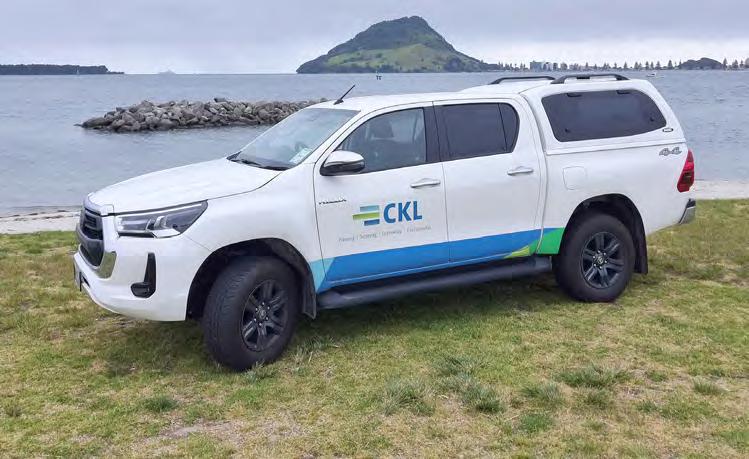


Summer is on the horizon and Trustpower Baypark has just confirmed that Nitro Circus will be coming in February 2022. In the meantime, there are also other exciting events coming up for the entire family to enjoy.
Baypark Speedway
The opening night has been delayed due to alert level restrictions, but Baypark Speedway will start off the season with a bang by combining Opening Night with Fireworks on Saturday 6 November. This will be followed by a line-up of race nights throughout the season to keep the speed demons entertained. All speedway dates can be found at www.bayparkspeedway.co.nz
Did you want to treat one of your valued clients? Or how about coming to Speedway for your Staff Christmas party? We have a number of exclusive, spacious corporate boxes with balconies to entertain up to 20 guests comfortably. These boxes are also available on an annual basis to cover the entire Speedway Season. Please contact us on events@bayvenues.co.nz or 07 577 8593 for more information.
The 7 Days Live tour is now officially an annual tradition. And this year our (not very) brave comedians will smash out 13 shows in 13 towns around New Zealand with (nearly) no fear at all. Jeremy Corbett, Dai Hen-
wood, Paul Ego and the team jump in a van and bring much-needed comedy to the nation, laughing directly in the face of Covid-19 (wearing a mask of course).
Don’t miss this show – part quickfire stand-up from the country’s best, on 16 December and part a completely un-censored and un-edited 7 Days show, it’s exactly the medicine we need in 2021 (along with the vaccine of course). Be there to see our comedy heroes, live!
Polo in the Bay
New Mount Maunganui event, Polo in the Bay, has this week chosen to postpone their inaugural event to January 22, 2022.
Event Director, John Guise, says that a challenging year has just got even harder for the entire events industry.
“Every organiser is faced with incredibly difficult decisions right now and after a year like 2020, we were all hoping these disruptions might be behind us for this Summer.”
Every year, we’ll be kicking off the Mount Maunganui Summer with fast-paced entertainment and firstclass hospitality – it’s a weekend that’s hard to resist.
The inaugural event features some of New Zealand’s most talented Polo players going to head-to-head in their provincial colours and this fresh Polo format brings you closer to the action – there isn’t a bad seat in the house. We have a range of hospitality options available, from a casual picnic-style Family Zone, to Private Marquees and the VIP Pavilion with specialty bars, catering and lounge areas.
Polo in the Bay features include:
Movember Brunch (R18)
• The Polo Lawn (R18)
• VIP Pavilion (R18)
• Private Marquees (R18 – limited spaces)
• Free Family Zone (unlicensed – all ages) Après Polo – Eat + Drink + Play at our Official Dining Precinct Tickets available from www. polointhebay.co.nz.
Nitro Circus
Buoyed by the strong momentum of the Covid-19 vaccination rollout, action sports leaders Nitro Circus have revealed plans to return to Tauranga’s Trustpower Stadium, for the first time in 5 years, on Monday Feb 7th, 2022. This announcement is
part of a comprehensive tour of outdoor stadiums across New Zealand & Australia in early 2022.
This news comes with Nitro Circus is in the middle of a six month, 27-city North American tour which stretches from coast to coast, hitting major markets such as Seattle, Phoenix and Nashville. The brand has emerged from the lockdown challenges of 2020 in a position of strength: its total number of shows worldwide this year marks an increase of more than 33% from 2019.

One of the biggest names in action sports, and the face of Nitro Circus’ 2022 tour, is Sunshine Coast’s Ryan Williams. The BMX & scooter world champion and three-time X Games gold medalist is thrilled to ride for his home country fans once again.
“It’s crazy that after touring Australia and New Zealand every year since 2010, it will have been three years since we have gotten to do a show in front of the best action sports fans in the world. We love New Zealand crowds!” Williams says. “Now we are primed to send it! We’ve used that time at home to work up a bunch of insane new tricks and trust me, you do not want to miss these shows!”
In the decade since launching its touring business, which debuted in Australia and New Zealand, Nitro Circus has gone on to perform on five continents and established itself as a major global live event property.
To date, Nitro Circus has performed more than 360 shows in over 30 countries worldwide in stadiums, arenas and festivals with an exciting blend of action sports excitement, jaw-dropping stunts and outrageous fun.
Tickets go on sale Friday November 12th through nitrocircus.com.
It’s never too early to start thinking about Christmas
It’s that time of year again when your work social committee starts to brainstorm ideas for your staff Christmas party. What have we done before? How can we make it better than last year?
Sure you could invite everyone to the conference room for drinks, or go out for dinner – but that’s all been done before. Why not celebrate the festive season at Baypark this year and indulge in a delicious Christmas feast created by our award-winning Executive Chef? Why not make your party extra special and visit BayStation and enquire about Drift-triking or Blokarts? To book or make an enquiry call 07 577 8560 or email events@bayvenues.co.nz.
Tauranga’s Premier Venue
Trustpower Baypark is Tauranga’s Premier Venue for conferences, meetings, entertainment and exhibitions. Offering a complete package in one convenient location that features state of the art meeting rooms, in-house catering, audio visual services, professional conference organiser (PCO) and marketing/promotional services. For more information on any events, enquiries for Trustpower Baypark venues, BayStation activities or service on/off site from BayCatering, BayAudioVisual visit www.trustpowerbaypark.co.nz or email events@bayvenues.co.nz.
From prenups to childcare arrangements to divorce, Holland Beckett Law’s newest Associate, Katherine Dyer, can support you through it all.
A Family Law specialist, Katherine’s ability to deal with complex matters sets her apart. Katherine started at Holland Beckett as a summer clerk in 2014, before joining permanently as a graduate two years later. She is a very well-regarded family law specialist, with regular Court experience and a unique ability to deal with challenging cases. Katherine is passionate about achieving practical solutions for her clients, including through out-of-court dispute resolution methods, where possible.
Her extensive experience includes contracting out agreements (“prenups”), post-separation relationship property disputes, care of children and guardianship issues, family violence matters, estate claims, adoptions, and dissolutions of marriage (“divorce”).
Congratulations on your promotion, Katherine.

Newly updated flood hazard maps for rural areas and small settlements in the Western Bay of Plenty have been published recently.
The new maps have been produced to provide up-to-date and accurate flooding information for properties outside Waihī Beach, Katikati, Ōmokoroa and Te Puke.
Western Bay of Plenty District Council’s Group Manager for Policy, Planning and Regulatory Services, Rachael Davie says, “For most rural areas and some small settlements, it is the first time that flood modelling has been used, and the team have been able to correct a number of historical inaccuracies in this process.”
The possible effects of climate change have also been taken into account, including increased rainfall intensity and sea level rise (where applicable).
Rachael says, “People looking to make informed decisions about building, buying property or preparing for natural hazards will now have updated information to work with.”
The updated maps will be
• shown on relevant property files and Land Information Memoranda (LIMs);
• used when processing building and resource consents; and
• used for updating the District Plan when its review starts in 2022.
The new flood maps, along with other natural hazards which have already been identified, can be viewed on Council’s natural hazards webpage with an interactive online map. Any one can browse the map or search for a specific property by address or Parcel IDs. Affected property owners have also been notified by mail.
Council’s work to update flooding maps for rural areas and small settlements is part of a multi-year project with the Bay of Plenty Regional Council. The remaining natural hazard maps for the District such as coastal erosion, coastal inundation, tsunami, landslide and liquefaction will be completed over the coming years.
Tauranga is growing quickly and that means we need to focus our efforts on the things that need to happen to accommodate growth and safeguard our great lifestyle. For a start, we need to think about building up and not just out. And we need to think differently about how and where we live and how we get to work, school and tertiary education.
By ANNE TOLLEY, Tauranga Commission Chair
Over the next 30 years, it’s estimated that 15,000 more people will be living on the Te Papa peninsula
– the area between the Harbour Bridge and Barkes Corner. That means we need to start work now to transform Te Papa into a place where more and more people can live, work, study and play.
Te Papa urban transformation will take time, but the key things it will provide are:
• Greater housing choices and more dwellings within our existing footprint.
• People-friendly streets.
• A thriving economy.
• More efficient public transport and increased bus use.
• More opportunities for walking and cycling.
• More connected neighbour-
2degrees’ newest business product offering, Insight Network, is an out-of-the-box software-defined wide area network (SD-WAN) solution that simplifies the management and operation of a business’s WAN.
Insight Network provides organisations with network control and visibility, business insights, data safety, and application prioritisation, and, most importantly, 2degrees has made sure it’s simple and easy to use.
Partnering with Fortinet, a leading security provider and a Gartner Magic Quadrant leader, to deliver Insight Network, the solution provides larger businesses with the ability to bring sites together with this new cloud-based solution and move away from legacy WAN products and privately owned links between offices.
2degrees Chief Business Officer
Andrew Fairgray says the team is excited to have further strengthened 2degrees’ product suite with Insight Network, continuing to provide solutions that Kiwi businesses want and need.
“We know more than ever before that businesses are exploring their options when it comes to the cloud and the opportunity SD-WAN brings,” says Andrew.
“So it was important to us to not only deliver a solution that was fully scalable, but one that had security at its core and delivered what we know our customers are looking for, which is business efficiency, convenience and simplicity, so they can focus on what matters most, doing business.”
Some of the key features of Insight Network include greater visibility and control so organisations can accurately assess what’s important and what’s not on their network at any time. More business insights help users make the right decisions at the right time, take control, and make changes with an easy-to-understand dashboard.
For example, Insight Network assists with application prioritisation, which means organisations can make sure the network is supporting the business as it should. This includes being able to assign bandwidth so high priority applications run at optimum performance.
Security was paramount when designing Insight Network, and

hoods with great public amenity.
• A more sustainable and greener urban footprint.
• Connection to a vibrant city centre.
Work is underway on a number of fronts to start our urban transformation process, including plan changes to allow housing styles that are better suited to peoples’ needs, such as apartment buildings and duplexes. Of

course, those changes have to be matched by improvements to facilities and services, so that our great city lifestyle is safeguarded.
At the same time, work has started to futureproof Cameron Road, the Te Papa’s main transport corridor, largely funded by a $45 million Government grant. The first stage of this project focuses on the section between 17th Avenue and the CBD and will provide morning and evening bus clearways (with a move to dedicated bus lanes as demand increases); wider paths and better and safer crossings for pedestrians; a dedicated two-way cycle way; and more trees and planted areas.
Aging water and wastewater infrastructure will also be renewed and upgraded to provide for an increasing population, while stormwater systems
will undergo environmental improvements to prevent run-off contaminating waterways and Tauranga Harbour.
Stage 2 of this project will complete the job of transforming the whole corridor from the CBD right through to Barkes Corner and beyond to the Tauriko business and commercial areas.
Te Papa urban transformation is a critical building block for Tauranga’s future and we’re working with our regional and central Government partners, local residential and business communities and tangata whenua to ensure we get it right. Change won’t happen immediately, of course, but the actions we are initiating now will help us accommodate growth, reduce car dependency, reduce our carbon footprint and create a more sustainable, people-friendly city.

the solution helps keep data safe and manage threats. The packages include extensive and advanced firewall options, which are more important than ever in the current climate.
As business has evolved so has where we work, and Insight Network can be utilised no matter where your team might be.
“So, whether your people are working across an office, a city, or across the country, Insight Network will operate seamlessly and simultaneously, as though under a single roof,” says Andrew. This seamlessness also means WAN can be extended to employees’ homes by utilising applications or by deploying end-point hardware on their home connections.
2degrees is proud to offer an SD-WAN solution that’s different from others in market; it’s flexible and ready to go out of the box with all packages including unlimited ultra-fast fibre.
“When customers partner with us they know we will continue to innovate and provide them with products and services that help them do business better, offering a complete suite of solutions and different options tailored to their specific business needs,” added Andrew.
“It’s this, combined with our award-winning mobile experience, that gives customers confidence that we will continue to Fight for Fair for Kiwi Business every day.”
Insight Network starts at NZ$145/m per site for a basic package, which includes a Smart Fibre 100/100Mbps connection and unlimited data. A more advanced package includes extensive security options with unified threat management and starts at NZ$204/m per site. Reach out to the 2degrees team on 0800 022 002 or visit the 2degrees website to learn more about Insight Network.


Rebecca joins Tompkins Wake’s Tauranga office as a Senior Associate in the dispute resolution team. Rebecca specialises in family law, including parenting disputes, relationship property disputes, contracting out and separation agreements, protection of personal

and property rights matters, paternity, Oranga Tamariki Act 1989 matters, and family violence. Rebecca practiced in the Wellington region for just over 15 years, and has extensive litigation experience, as well as regularly representing clients at mediation.
In 2014 Rebecca was appointed to the Lawyer for Child panel and received regular appointments from the Court as Lawyer for Child and Lawyer to Assist.
Cheryl joins Tompkins Wake’s Rotorua team, representing clients in a wide range of disputes with a specific focus on family law, particularly relationship property, settling property matters, and contracting out agreements. Cheryl

also represents clients in Family Protection Act and Will disputes (challenges to Wills and claims against estates). Cheryl enjoys working with clients to ascertain the best strategy to deal with their legal problem. She looks for practical solutions, focusing on resolving disputes before they escalate.


Lauren joins Tompkins Wake’s Tauranga office as a solicitor in our Disputes Resolution team with a focus on family law and civil litigation. Lauren was admitted to the Bar in 2019 and before joining Tompkins Wake, previously worked at a boutique law firm in Tauranga specialising in family law.

Tess joins Tompkins Wake’s Tauranga office as a member of our Property & Real Estate team. Tess is experienced in residential conveyancing as well as Wills, EPAs and Estates.
incorporated society based at APR Consultants comprising many businesses committed to sustainable outcomes and to continually improving their environmental & social performance.
The Rotorua Sustainable Charter is pleased to welcome Kirsty Wyndham to the team in the newly formed role of Marketing and Communications Advisor.
Kirsty brings with her over 15 years of Tourism and Marketing experience, building some of the most incredible activities into must-do adventures!
With a passion for doing the right thing, Kirsty is looking forward to working with Charter members with their sustainability journeys, sharing their sustainability and conservation stories. www.rotoruasustainablecharter.org.
Bay Venues is pleased to announce that Chad Hooker has been appointed as its new CEO. Mr Hooker has been the Director of Operations at H3, Hamilton City Council’s event and venue division since 2010.
In his current role Mr Hooker has overseen the operation of FMG Stadium Waikato, Seddon Park and Claudelands Events Centre. He has also been responsible for attracting and delivering major events on behalf of Hamilton including sporting world cups across rugby, football, rugby league and cricket as well as the highly successful HSBC NZ Sevens.
Prior to his role with H3 he spent over a decade managing shopping centres, including leading Westfield Chartwell Shopping Centre in Hamilton through two major redevelopments.

wider community to contribute to the ongoing development of the city and region.”
Simon Clarke, Bay Venues Board Chair, says that ‘the Board are excited about the experience and leadership that Chad will bring to the organisation. He has a strong balance of commercial and community experience and his enthusiasm for the industry is evident. We are confident that he will lead the Bay Venues team positively as kaitiaki (guardians) of Tauranga’s key community facilities.”
“The Board would also like to acknowledge and thank Adam Ellmers for stepping into the CEO role over the last few months. He has done a great job and we look forward to his ongoing leadership contribution as he returns to the Chief Financial Officer role on Chad’s arrival.”
Mr Hooker will start with Bay Venues on Monday 8 November 2021.
Greg Stephenson
Do you have a plan on how to best meet your future financial needs?
Ensuring that you have enough income to see you through retirement and are able to manage unforeseen changes in income can be a significant challenge.
At Forsyth Barr we have a dedicated team who can help you to plan, build and manage an investment portfolio to suit your needs.
Whether you need to maintain a certain level of income, or grow funds to help future generations reach their financial goals without the burden of debt, we can provide the expert help.
Contact us for a free review of your investments in confidence and a no-obligation discussion on how we can help you achieve your future financial goals.
40 Selwyn Street, Tauranga | (07) 578

Mr Hooker explains that he is “passionate about ensuring that public venues like those operated by Bay Venues deliver exceptional benefits for the community. That they enhance Tauranga as a great place to live and provide economic opportunities to local businesses.
“ My focus will be on supporting the Bay Venues team to further develop as a high performing team, so that they can continue to provide the best possible service to Bay Venues customers and the community.”
“Bay Venues operate a wide range of community facilities and I am excited to see how we can best maintain and develop them for the long term. As Tauranga grows, I look forward to exploring opportunities for Bay Venues to work with Tauranga City Council and the

Tauranga-based legal tech start-up, LawVu, has announced the appointment of Greg Stephenson in their newly-created role of Chief Marketing Officer.
Greg joins LawVu with an extensive background in marketing across global markets for companies such as LinkedIn, Vodafone, and Garmin. With an appetite for the ambitious start-up scene in NZ, he will play a key role in helping LawVu in its global expansion.
The forest industry is calling a media statement from the Environmental Defence Society an ill-informed rant against forestry which ignores the threat of climate change.
Forest Owners Association President, Phil Taylor, says he would not have expected what amounts to a denial of the significance of climate change from an environmental organisation.
“EDS acknowledges the need to address climate change. But then EDS condemns the central role plantation forests must play over the next three decades if we hope to get New Zealand to carbon neutral. At the moment, our forests offset a full third of all New Zealand industry and agriculture emissions. As we head to the critical next three decades of the global fight against climate change, our forests will be even more important.”
He says the huge challenge to reduce greenhouse gas emissions at source is vital.
“But without fast growing plantation trees filling the carbon gap the task would be politically and technically impossible. Without more exotic forest plantings, farmers would have to severely cut back on their stocking rates to compensate. Their production would fall. Does the EDS want that?”
Phil Taylor says the EDS suggestion to plant more native trees for carbon sequestration may make sense –but only in the long term.
“The climate scientists tell us we need real action now to avoid a runaway catastrophe. We don’t have long enough to wait for native trees to lock up carbon from the atmosphere. Pines and eucalyptus do it in years. Even the fastest growing indigenous trees take decades.”
“Indigenous forest carbon sequestration hardly registers by 2050. It can only become significant in the 22nd century. To change the Emissions Trading Scheme to favour carbon in native trees, as the EDS wants, flies in the face of science and jeopardises any attempts to get New Zealand to Carbon Zero by 2050”.
Phil Taylor says the EDS complaint about foreign investment in forestry is also misplaced.
“EDS claims of unspecified ‘vast swathes’ of overseas investment reads as cheap xenophobia. Most overseas interests in forestry in New Zealand earn no carbon credits. Forests earn their own way economically.”
“Forests are also vital for the developing bio-economy in New Zealand to replace unsustainable use of petrochemical derived products. And it can be done over a small area. It’s not ‘swathes’ as EDS would have us believe. The 380,000 extra hectares of new planting the Climate Change Commission envisages would take less than four percent of the current hill country farm estate out of farming – and the least productive farmland at that.”
Phil Taylor says large and small exotic forests harbour substantial intrinsic biodiversity, contrary to EDS’s claim.
“EDS says it supports farming, while it attacks forestry. The fact is that there is at least as much indigenous habitat in our forests as there is on farmland.”
A wonderful Christmas season is almost here, and Christmas parties are being planned. For any business, these times are just as important as the busiest time of the year.
Entertainment expenses have always been a bit of an ambiguous area for business owners and in-house accountants. If I was to give one suggestion it would be this: what may’ve been tax-deductible in the past, may not be anymore, things have changed.
Entertainment is part of your business, and this is fully accepted by the IRD. You can claim the cost of entertainment to build up business contacts, keep your employees happy, or promote your goods or services.
When you are spending money on entertainment, a good question to ask is this: If I spend this money, will I generate extra income? If the answer is yes, you may be able to get a tax deduction.
You can claim 100 percent of food and drinks you provide at a conference, education course or similar event that lasts for four consecutive hours or more.
You can claim 100 percent of the food or drinks if it’s a light meal, and consumed as part of the manager’s employment duties. For example: Once a month, senior managers at A2Z Ltd meet in their executive dining room to review the month’s figures. The light meal of sandwiches and fruit is 100% deductible.
You can claim 100 percent if you supply entertainment to promote your products or services, for example if you run a networking event with the purpose of promoting your business.
Another category of entertainment expenses is only 50 percent deductible because they have a significant private element. Even if you think that the private element was

> BY VALERIE ROWE-MITCHELL
Accounting and other money matters with Valerie Rowe-Mitchell, owner of Emerald Business Advisers. Valerie can be reached on 07 579 5777 or valerie@emeraldbusiness.co.nz

more or less than 50% of the expense, you can only claim 50 percent as a deduction.
Corporate boxes, marquees, tents or similar exclusive areas at cultural, sporting events or away from your business premises, are only 50 percent deductible.
You can deduct only 50 percent of the cost of food and drink you provide at your business premises, it may be a celebration meal or a party. This rule applies whether the entertainment is provided to staff or to guests invited from outside the business. Example: A2Z Ltd holds a Christmas party for its employees at work. The company can claim 50 percent of the costs.
Another area worth your
attention is gifts of food and drink.
The IRD is clear that gifts of food or drink that will provide a private benefit to the recipient and a business benefit to the taxpayer are only 50 percent deductible. For example: Real estate agent Bob delivers a bottle of champagne to a client. Bob can only deduct 50 percent of the cost of that bottle.
Bob also sends a gift basket containing a bottle of wine, cheese and various household items such as tea towels and soaps. He can deduct the full cost of the tea towels and soap, because these items are not food and drink. But he can only deduct 50% of the cost of the food items.
And of course, if the expense doesn’t help your business earn extra income, it’s a private expense and no tax deduction will be allowed, even if you paid for it out of your business account. Team building and social interactions with customers and suppliers are an important part of running a successful business, keep accounting for it correctly and keep building those strong successful relationships.
This article is substantially based on the IRD’s Entertainment Expense guide and if you have questions or just would like to say “Hi” please email: valerie@emeraldbusiness. co.nz

> BY NATHAN BONNEY
Nathan Bonney is a director of Iridium Partners. He can be reached at nathan@iridium.net.nz or 0275-393-022
ithout question, Auckland’s continued lockdown is most acutely felt in Auckland, but if we use the old butterfly analogy, businesses based in the regions – whilst up and running – are affected to some extent. This may vary depending on their reliance on travel or tourism, whether they require stock or services, originated in or through Auckland, or if their markets are in Auckland. Clearly we have an economy that is running in different gears. These impacts and influences are not unique to any particular business model, but there are some additional fac-
tors from the ongoing lockdown that specifically affect franchised businesses.
Uncertainty creating paralyses
The greatest difference I have seen during this Auckland level 3 lockdown and previously is the influence on business confidence.
During previous lockdowns, we noted potential franchise business purchasers either holding off on purchasing decisions or not proceeding. This behaviour based on apprehension has resurfaced and is definitely stronger amongst investor and potential franchisees, across the coun-
try. More people are deferring decisions.
What is very different this time around is a universal inability to plan and execute business plans.
Franchisees and franchisors alike are feeling less confident around what the future holds and unable to make decisions and or execute business plans.
The implications of the country being in different levels is also being felt as Auckland based franchisors are unable to travel. The lack of clarity and lack of plan has created a continuing holding pattern for many.
Additionally, and extremely frustrating for franchisees and franchisors alike, is the lack
of control or ability to solve issues themselves.
Franchisors usually operate within a framework where they have the answers for their franchisee’s problems based on tested experience and processes. Currently they don’t have solutions for franchisees not being able to trade, and many of the implications derived from that situation.
Regional movement to intensify
My enthusiasm for the franchise business model and its application to regional New Zealand is extremely well documented and I have written on it on several occasions. Lower housing prices, lower rentals,
less competition combined with the opportunity to achieve a desirable lifestyle contribute to the attractiveness and success rate of many regional franchised businesses.
There is plenty to indicate that regions are doing well and I fully expect that when people can exit Auckland, the numbers doing so will increase.
As discussed previously, many will need to find business opportunities in the regions and will look towards franchising as a safer option.
International brands expansion into New Zealand
The entry into New Zealand and growth of international
Franchisees and franchisors alike are feeling less confident around what the future holds and unable to make decisions and or execute business plans.
franchised brands and system is one area that remains difficult to predict.
Six months ago, New Zealand was perceived internationally as a safe place and open for business. We have been working with a number of international brands to enter or expand into the New Zealand market and there has certainly been a desire to do business here.
But as other countries open up their economies and New Zealand stalls, that’s perhaps not the current view. Additionally, restrictions on travel into the country seriously retard international business access. At the same time as many businesses and business models including franchising are not without challenges, past experience and the bounce back from 2020s’ lockdowns have demonstrated that the systemised approach to business, fast track start-up and ramp-up models of franchising will see continued growth in this sector.
There’s a reason why you’re in business. It’s what makes you turn up each day and keep pushing. Maybe it’s the freedom of being your own boss, the satisfaction of helping others, the thrill of upskilling, or even just the life your job affords you.
Self-employment can be a rewarding, but demanding way to make a living. It takes persistence, dedication and resourcefulness to work for yourself and build a successful business.
Sometimes, the pressure and stresses of work can get in the way of why you started your business in the first place. It’s tough out there, and you can end up bogged down, confused, or losing touch with what’s at the core of why you do it.
When I’m talking to small business owners, there are many sources of stress for small business owners. Below are just some of the key ones, but there are many ways to overcome these and reconnect with why you’re in it.
I’m stressed about money
The small business economy is a major part of Aotearoa’s economy, contributing more than a quarter of GDP and accounting for 97 percent of all businesses across the country.

When our small business community is humming, everyone benefits. Whatever your industry, there are digital tools to help you keep better track of how your business is doing.
For example, signing up to Digital Boost will give you the tools and insight you need to understand how to improve your cashflow and productivity.

> BY CRAIG HUDSON
Craig Hudson is Xero’s managing director for New Zealand and the Pacific Islands.
across Aotearoa, one in three small business owners feel they’re working too many hours a week.1
Not only this, but more than a quarter of them believe the number of hours they work per week is unsustainable.2
wellbeing fall down the priority list.
But you’re not doing your best work when the pressures of life and business get too much. Now’s the time to take control of your wellbeing and the health of your business.
for and have the support they need.
Establishing a supportive work environment is not only the right thing to do, it can make your business more profitable.
I’m working too much
For many Kiwis, making the decision to become a small business owner is rooted in the ability to be their own boss and live more flexibly while working fewer hours.
But this isn’t always the case – small business leaders are telling us they are working unsustainably long hours.
According to a survey of more than 1,000 small business owners and sole traders
It’s free, only takes a minute, and can really help Kiwi small business owners with their understanding of money issues within their business –as well as the potential solutions to them.
Overworking can have a negative impact on your wellbeing and eventually lead to burnout, not to mention directly impacting your bottom line as you’re less likely to make your best business decisions when under pressure.
Digitisation is the key to unlocking time and streamlining administrative tasks, with almost half of small business owners thinking their wellbeing would be improved by making their business more productive with digital tools.
I’m not looking after myself
When you’re focusing on the success of your business, it can be easy to let things like your
That’s why Xero has developed the Self-Employed Check-In, a guide to improving resilience and wellbeing in the workplace with a focus on self-employed Kiwis.
By establishing routines and rhythms, setting clear boundaries, managing stress with the tools available, taking small steps to look after yourself and finding support, the guide details how little steps can add up to big changes over time.
I’m worried about my team’s wellbeing
It’s hard to know what to do when your team is struggling. But as a manager, you need to help make sure they’re cared
There are also wellbeing support services you can offer your team. If you use Xero, you, your employees and families have access to free confidential professional counselling sessions through the Xero Assistance Programme (XAP). By understanding what’s getting in the way of your why, you can get back on track faster and reconnect with what made you start a business in the first place. It’s time to take action and reconnect with your why. Visit Xero.com/whywereinit to find out more.

Western Bay of Plenty District Council has retained its strong AA credit rating.
International credit rating agency Standard & Poor’s (S&P) says that despite a planned investment of $168 million in infrastructure projects during 2022-2024 (partly funded by debt) Council’s financial position is strong.
Council’s AA rating gives assurance to lenders that any debt carried comes with a very low credit risk and strong capacity to repay debt drawn down for significant infrastructure or unplanned events.
The score also allows Council to access lower interest rates from the Local Government Funding Agency.
Council’s Group Manager Finance and Technology Services, Kumaren Perumal says a strong and stable credit rating in the face of a large capital expenditure programme, and the impact of COVID-19, shows our investment approach is sound. “We’re in a great position and the rating provides confidence that if we need to borrow funds because of an unexpected event, we can do that.
“This credit rating result also provides our stakeholders and communities with assurance that Council has fiscal discipline and a prudent approach to financial management.”
The S&P report says Western Bay’s regional economy is looking similarly strong.
“Western Bay’s location and economic profile mean it will outperform domestic peers during the COVID-19 pandemic. This is because the pandemic has had a limited effect on the largest industries of agriculture, forestry, and fishing, which account for about 20 percent of economic output. … Western Bay is also less reliant on tourism than other councils.”
S&P is a global credit agency that gives out ratings based on factors such as finance, debt repayments and the economy. Their independent credit ratings indicate an organisation’s ability to take on and repay debt in the future.
The way we access and use workplaces was already undergoing change prior to the pandemic outbreak, but the global health crisis accelerated some of those trends in the office sector.
Advances in technology, a more diverse workforce, a flight to quality, the importance of global marketplaces and changing expectations around property requirements, were all having an impact on the space that companies and office-based operators were committing to.
There was never a “one size fits all” template in the office market, however what is becoming clear is that businesses that embrace new ways of working, are flexible, and leverage technology, will thrive in the postCovid economy.
The work-from-home mandate saw office workers plugging in from widespread locations, and since then, there has been serious reconsideration about where employees could be based going forward, with CBD premises not necessarily being the sole answer.
This emphasis on having a more distributed workforce is a trend being seen globally and in New Zealand, as corporates and larger businesses opt to positively fragment their physical space footprint beyond the usual centralised head office model.
Lloyd Budd, Bayleys’ director Auckland Commercial & Industrial, believes that the way offices are designed, how occupancy costs are approached, and this evolving distributed workforce model will structurally
change office space dynamics and the suburbs will take on new meaning.
“Larger companies and businesses with scale are proactively looking to the core + flex model of office space with a consolidated central location supported by smaller satellite flexible spaces in the suburbs that can expand and contract to cater for varying staffing and work flows.
“Those businesses with a core + flex model in place, will be able to have different teams working safely from different premises for a far more efficient use of time and resources should other disrupting events occur in the future.
“Many office-based businesses operate on a project basis rather than an office hours basis, and so can accommodate flexible ways of working in the suburbs –with one upside being fewer cars making the commute in and out of CBDs.”
Budd says work-from-home as an operational office business model will not become our new workplace normal.
“We are social beings and if we’re isolated in our homes –even with the best technology and support – there’s just not the same capacity to build culture and be inspired.
“Face-to-face interactions drive innovation and connection – video link meetings from home

don’t achieve that in the same way.
“There’s also physical work space health and safety concerns, potential for security or confidentiality breaches and likely productivity drains in working from an often-busy home situation.
“I think businesses will have work-from-home as a backup plan and to allow flexibility in certain situations, but not as a broad-stroke mandate.”
Budd says a move to suburban office space in smart mixed-use precincts could see the revitalisation of retail and hospitality in those areas resulting in stronger, more consolidated neighbour-
hoods where a real village atmosphere prevails.
“Perhaps micro-communities could evolve within a commercial strip or shopping centre with a mix of office space, boutique or niche retail and hospitality such as a whisky bar for after-work drinks, a classy hairdresser or barber premises, a tailor, a farmers’ market-type store with artisan suppliers or the like.
“It’s an opportunity to redefine the look, feel and service offerings that suburban locations offer.”
www.bayleys.co.nz/workplace/ industrial/insights/data-centres

How you leave a relationship, be it employment, personal or business, is just as important as how you behave within it.
We all know the saying “you only get one chance at a first impression”. Well your last impression is just as important and can have far reaching consequences. Especially in business.
I have had occasions where I spend a lot of time working with a potential client on solving a credit issue the likes of which I have seen hundreds, if not thousands of times, and the client just won’t get on board. As we will never be able to work together we decide to part ways.
Now, in this situation, I could either tell the client, “I wish you the best of luck with the issue, if you decide that I can be of value please give me a call” or detail what the disastrous consequences of his poor judgment will be, wait for them to happen, then call him and say “not such a bad idea now is it buddy!” I have had this situation crop up quite a few times since I began my career.
Sometimes the clients’ decisions have cost them hundreds of thousands of dollars whereas my solution would have cost a few grand.
Let me tell you the temp-

> BY NICK KERR
Nick Kerr is a Business Advisor at NJK Advisory Ltd. He is also director of International Private Investigations Ltd. Nick can be reached at nick@nzipi.com
tation to make the “I told you so” call can be very strong, but me looking petty and making the client feel stupid will have long lasting and very negative effects on both my reputation and the willingness for the client to refer other people to me to assist them with avoiding similar issues.
Who wants to refer business to a pompous dork who made you feel stupid?
Facing up to being cheerleader
For employees this also applies. When you are a passionate and dedicated professional you do not simply work for a company or organisation, you become the face of it, its cheerleader. Its welfare and success becomes your mission and sometimes the focus of your life.
Sometimes jobs don’t work out, roles become stale or the employees’ passions change. The employee meets with the employer, states their wish to depart respectfully and moves on.
I have met the aforementioned employees while they held the role and after they had departed.
When asked, they simply say that they chose a new direction and that they wished the old team well.
These people seem to fit well into the new environment and are generally successful. The fact that they were an ardent advocate of the previous employer and now another does not seem hypocritical or unusual, that is just who they are.
Sometimes the employee quits in a dramatic, over the top and sometimes violent
way blaming all and sundry for their decision to leave. He or she then insults everyone they work with on the way out and afterwards takes every chance to run down the old employer and former team members.
They may raise overblown or exag gerated personal grievances against the former employer and actively discourage people from engaging with the business for vague and unprovable reasons, seemingly out of spite, when only months before they were all “No ‘I’ in team” and “Together Everyone Achieves More” while being passionate cheerleaders.
Sometimes jobs don’t work out, roles become stale or the employees’ passions change. The employee meets with the employer, states their wish to depart respectfully and moves on.


Such people may find it very hard to get ‘buy in’ from their new teammates, employers and clients alike, as they will seem fickle and hypocritical.

Just remember that the client that you embarrassed, the former teammate that you ran down, the employer that you ridiculed publically and the business that you tried to damage, may be the referrer or ref-
erence that you need to get that promotion, large deal or other life changing opportunity. Everyone knows someone and that someone may know the someone who has a very dim view of the last impression you made. Just a thought
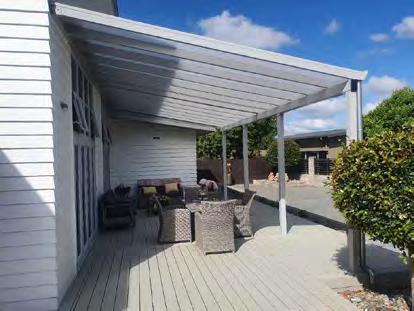
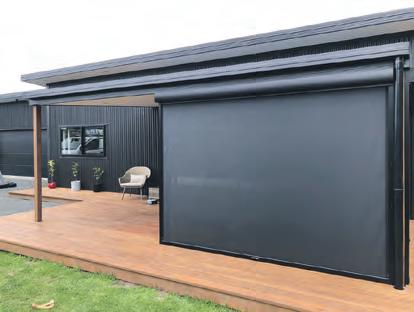
from the recent Tauranga Chamber of Commerce BA5 with PMG Funds.
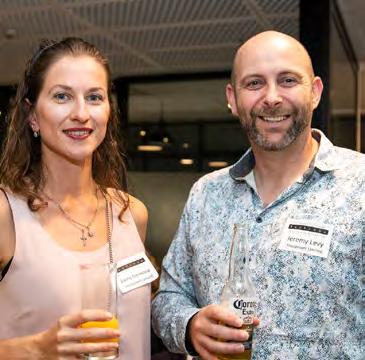

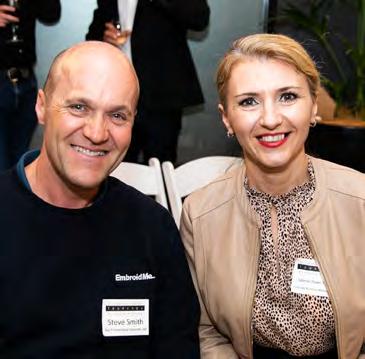
1 5 7 6 2 4 3
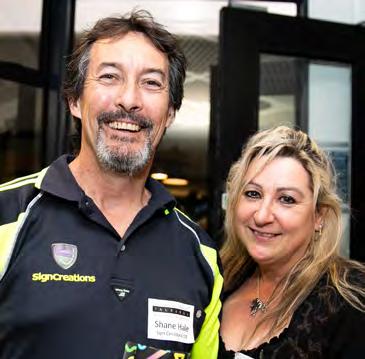


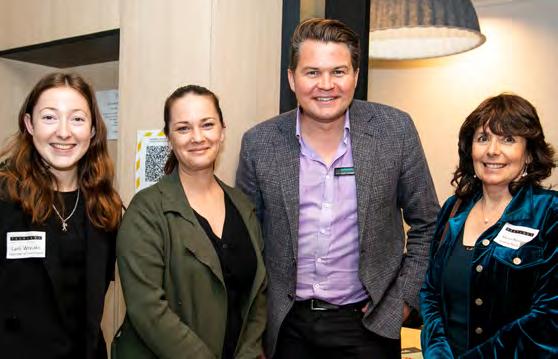
When preparing your business for sale it is important to identify the parts of your business that you have control over and which can have an impact on the value of your business.
At Tabaks we have a detailed checklist that we go through with business owners which outlines the key parts of your business such as the owners input, systems & processes, staff structure, leases, customer & supplier agreements, Worksafe and Health & Safety to name a few.

> BY PAUL
BRLJEVICH
Director at TABAK Business Sales. Paul can be reached on 027 693 4079 or paulb@tabak.co.nz
The importance of having these elements of your business in a current, well presented and documented order cannot be overstated. A buyer who is looking at your business will want to satisfy themselves that they are able to walk in on day one and the business systems will continue to operate as normal without you as the owner being there. This makes up the goodwill part of the transaction.
If, as an example, the systems & processes are all in the current owners head and are not documented, or the owner is so vital to the business operation that the busi-
ness cannot operate without him, then the intangible asset value is diminished. This is also the same if the lease on the premises expires soon or there are no details of customers and supplier arrangements, work safe creditation or Health & safety records. If these are not documented or current they will have an impact on the business goodwill value and attractiveness to a purchaser.
Presentation is also a factor that some business own-
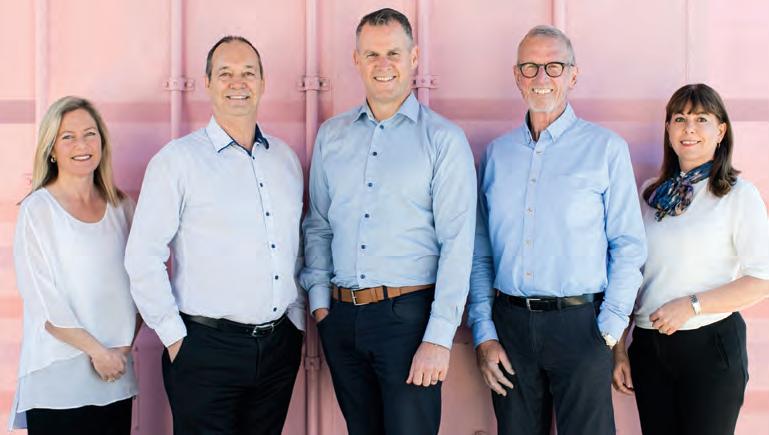
ers do not pay enough attention to. I have come across cases where the vehicles are dirty and unkept (they do not need to be new but should be clean and presentable) or the premises and offices were not clean and tidy. This first impression is going to reflect badly on a purchaser who is looking at your business.
I urge business owners to have a critical look at your business from the outside
and see how your business presents, not only from a physical point of view but also internally i.e. systems & processes. This is the view a purchaser is going to get so you want to make sure it is a good one.
Unfortunately there are some parts of your business operation that are out of your control such as Covid, Government policy, supply and labour shortages. These are
affecting some businesses more than others but here in the Bay of Plenty I suggest that we are doing much better than a lot of other areas. Remember, when you decide it is time to consider selling your business make sure that you take the time to prepare it and change the things that you can control so that you maximise the presentation and goodwill value of your business.


In October, Facebook founder Mark Zuckerberg made the announcement that while the Facebook app might be the cornerstone of the company, the future of the company belongs to the Metaverse. The corporate behemoth is set to hire 10,000 people over the next five years in the European Union to build this metaverse and transform how we interact digitally.
The metaverse, short for “meta-universe,” designates a cyberspace parallel to physical reality where a community of people can interact in the form of avatars.
The concept was coined by author Neal Stephenson in the 1992 science fiction novel “Snow Crash”. It refers to the merging of physical, augmented, and virtual reality in a shared online space.
In essence, the “Metaverse” started as a science fiction thing and while defining the term is not easy, one thing is probably true.
The term will not be defined by one single person or company, it will be defined by many, and it will evolve.
The language we use to describe the future today is ever-changing.
Google the term metaverse and you’ll find several definitions.
Video giants
Currently, two of the biggest players in this space in 2021 are video game companies Epic Games, maker of Fortnite and Roblox Corporation, maker of kids gaming phenomenon, Roblox. Both games boast a world of many experiences where avatars can create new worlds and games, hang out with friends, catch a concert, or even go to the movies. Each with their own cryptocurrency, players can buy and trade items or “skins” to customize their characters. It seems crazy to think that in a digital universe, social status is still represented by the brands your avatar wears. Brands such as Gucci made a splash in May when a Gucci handbag sold for $4,155. This inspired Gucci to create an entirely customised

virtual experience on Roblox which acquired approximately 20 million visits, and hundreds of thousand Roblox users acquired new items for their avatars to parade.
In 2020 Roblox corporation generated a total revenue of over NZ$1.2 billion, all through the sale of its virtual currency “Robux” which players use to purchase virtual items created by Roblox as well as the community of creators on the platform.
Fortnite on the other hand, generated more than 5 billion within its first year, with a model of being a free game, this revenue transpired solely from gamers leveling up on their aesthetics.
Social norms crossing over
While we might look at this and think these are simply games,
October 1 was not only the dawning of a new month, but it was an interesting day for tax legislative development in New Zealand.

> BY ANDREA SCATCHARD
Andrea Scatchard is a Tax Partner at Deloitte, based in the Bay of Plenty. She can be contacted on ascatchard@deloitte.co.nz
ollowing an initial consultation phase, the well-publicised and debated changes to the brightline rules and the ability to deduct interest on residential properties took effect from that date.
This is despite the legislation not having been passed, the consultation period for the draft legislation still being open and the accompanying detailed commentary (which provides a more accessible description of the rules) only being subsequently released on October 12.
The legislation is not expected to be passed until March next year and while there is precedent for retrospective application of new tax legislation, this is contrary to New Zealand’s Legislation Guidelines and more commonly occurs where the changes are either taxpayer
friendly or are aimed at closing known loopholes. These changes definitely are neither of those.
The interest denial changes are contrary to the general tax principle that costs incurred in earning taxable income are able to be claimed against that income, and are an example of the Government using tax policy settings to drive taxpayer behaviour and achieve a nontax goal of improving housing affordability.
Interestingly the official documents released with the draft legislation show that Inland Revenue did not support the proposals, considering that they will lead to higher rents and may reduce the supply of new housing developments. Time will tell what the true effect will be.
The developments represent some very important and very complex law changes that
will affect various types of residential landlords and other investors in residential land.
Given the breadth of the changes and the fact that the commentary to the draft legislation is 129 pages long it is just not possible to adequately summarise the changes in this article.
Readers can find more detail in our Deloitte Tax Alert at www.deloitte.co.nz, and a series of information sheets issued by Inland Revenue on the changes can also be found at https://taxpolicy.ird.govt.nz/ publications/2021/2021-other-interest-limitation
Review rules in detail
While landlords with a simple residential rental property should generally be able to understand the interest denial rules easily enough, taxpayers with more complicated cir-

> BY MARIETTE TOLMAY
Mariette Tolmay is the marketing lead at Stratus Blue. She can be contacted at mariette@stratusblue.co.nz.
it highlights how “in real life” social norms are crossing over to a digital space, a Travis Scott concert on Fortnite drew a crowd of 12.3 million and Alt music duo Twenty One Pilots had a sold-out Takeover Tour with a concert entirely within the Roblox platform.
The ability to purchase brands and experience concerts as a digital character is still for now predominately in a 2D world and yet the monetary investment for these conglomerates continues to rise as people search for more ways to
“live” within a digital world.
Conversation around a more tangible, actualized Internet seems only more pointed in light of our current shelter-inplace reality in response to the coronavirus pandemic. Where the online world echoes and fulfills real-world needs and activities.
So what will this “Metaverse” mean to us?
At the moment, people interact with each other online by going to websites such as social media platforms or using messaging applications.
The idea of the metaverse is that it will create new online spaces in which people’s interactions can be more multi-dimensional, where users are able to immerse themselves in digital content rather than simply viewing it. Its ambitions are to alter the way we work, play, spend and consume technology.
If all this sounds beyond your ken, know that instead of checking your phone first thing in the morning, at some point you will be checking into the Metaverse.

cumstances will need to review these rules in more detail and seek professional advice on their application to the calculation of taxable income and payment of provisional tax.
Some of the complex situations will include taxpayers with mixed commercial/residential use properties, mixed use borrowing (either for mixed commercial/residential properties or where some properties held are excluded from these rules), land which contains an existing property where a new build may be added, subdivided land and properties where borrowing needs to be refinanced.
In the same week, Inland Revenue also released, but with much less publicity, a
draft Interpretation Statement on the application of the land sale rules (including the brightline test) to “changes in co-ownership, subdivisions, and changes of trustees”.
An Interpretation Statement is not a change in law but rather is the Commissioner’s interpretation of how the existing law applies, so once this is finalised following the consultation period we should expect it will be applied retrospectively by Inland Revenue.
The draft Interpretation Statement highlights a range of scenarios where there is a change in ownership interests in land which may result in a “disposal” for the purposes of the land sale rules, with the consequence possibly being
a surprise tax cost (for example, if the change in ownership occurs within the brightline period).
It also makes it clear that in Inland Revenue’s view registration of a change in ownership percentages on the land title will restart the brightline period for the owners. This will be of particular interest to friend or family groups that buy property together and subsequently make changes to their respective proportions of ownership.
Submissions on the both the draft legislation and Interpretation Statement can be made until 9 November 2021, although whether the Government will take this feedback on board remains to be seen.
Life is full of challenges, particularly in the world of business. News can go viral overnight, with organisations finding themselves in a bad PR storm before they even know it. But if there’s one thing that people love, it’s a comeback story. Ingenious, well-planned messaging can be just what’s needed for a brand to fight their way back to success.
In the UK in 2018, KFC faced a problem: they ran out of chicken. For a fast-food restaurant with chicken as their main menu item, this was quite the mess up.
It culminated in a dramatic news broadcast from police pleading with people to stop calling them to report the lack of chicken (yes, really).
While this could have been an embarrassing and financially damaging scenario, KFC pulled out an astonishing turnaround, giving us a lesson in great crisis management.
Firstly, they put the status of each restaurant on their website and constantly answered questions on social media. Pretty standard stuff.
But their main stroke of inspiration came from their marketing team who rolled out a series of brilliant news-
paper advertisements showing a bucket of their iconic chicken... with one main difference. They rearranged the KFC letters to read “FCK”.
It was a bold move to use such risqué language and not sugar coat the mess up – but it went down a storm.
Their ability to laugh at themselves and take complete ownership of the mistake resonated with people. They were open, quick to respond, and stayed faithful to their brand voice.
Customers loved this transparency and praised them widely. KFC took back control of the headlines and people were celebrating them, rather than cursing them.
Other organisations, however, have not done so well in a crisis. In the same year, Krispy Kreme were opening their first
New Kiwifruit Breeding Centre launches to boost innovation
Healthier, better tasting and more sustainability-focused varieties are the goals of the new 50/50 joint venture Kiwifruit Breeding Centre that opens its doors this week.

The Kiwifruit Breeding Centre (the Centre) has been established by Plant & Food Research and Zespri to take their 30-year relationship of successful kiwifruit breeding to the next level.
With about 45 staff, the Centre is based in Te Puke, and operates out of Kerikeri, Motueka and Mt Albert. It will also have a presence offshore in selected kiwifruit regions.
The Centre will be jointly funded by Zespri and Plant & Food Research, a New Zealand Government-owned Crown Research Institute. The organisations will share royalties from any future commercialised new varieties.
The Centre’s inaugural CEO Matt Glenn said he was drawn to the opportunity to lead an organisation focused on science and commercial success.
“The Centre will be key to the future success of New Zealand’s iconic kiwifruit industry. Plant & Food Research and Zespri have laid a very strong foundation. They now want us to spread our wings and develop new cultivars that will delight consumers all around the world.”
The Centre aims to extend New Zealand’s position as the world’s leading innovator in kiwifruit. Experienced agrifood and innovation sector director Michael Ahie is Chair of the Kiwifruit Centre Board. Mr Ahie is Chancellor of Massey University and a former Chair of Plant & Food Research.
store in New Zealand. They had been running an extensive PR campaign for weeks, getting journalists along to a special preview event and offering thousands of freebies to the first 100 customers.
Over zealous and fired
But hours into opening, an “over zealous and tired” security guard turned a Filipino woman away from getting free doughnuts because he assumed that she wasn’t a Kiwi.
Krispy Kreme responded by justifying the incident, saying their competition T&Cs stipulate that only residents of the specific country the competition is taking place in can enter it. They did also apologise, but people thought that their response was defensive, full of empty words, and came
The impact of a bad story can be devastating, so when chicken or doughnuts hit the fan, respecting the public with the correct response means they’ll respect you back.”
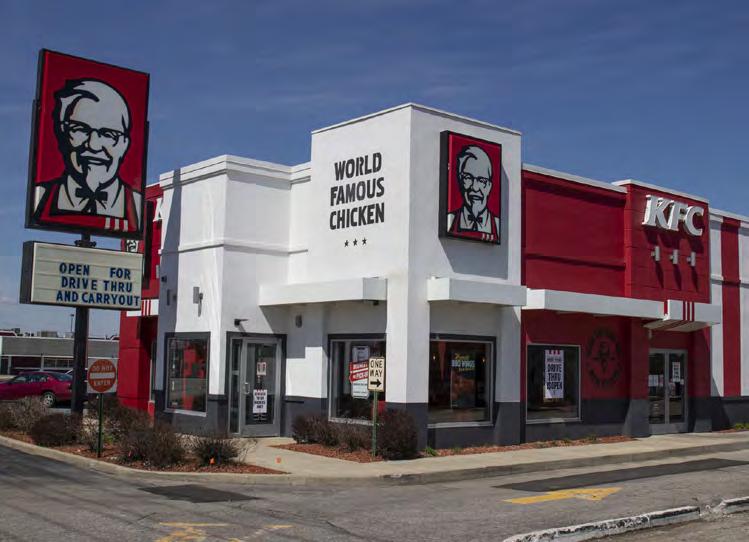

too late.
> BY
JAMES HEFFIELD
Director of Bay of Plenty marketing and PR consultancy Last Word. To find out more visit lastwordmedia.co.nz or email james@lastwordmedia.co.nz.
The incident prompted fury, with people accusing the company of racial profiling and renaming them “KKK” (Krispy Kreme for Kiwis only). The Philippine Ambassador even got involved. Krispy Kreme’s big opening went from sweet to sour.
So, what can be learned from these two incidents? We
all know that people and companies are imperfect and will slip up. But these days, mistakes are difficult to hide – the lines between organisations and the public are more blurred than ever, as proven by how far and quickly word spread about these two scandals. Therefore, having good crisis communications is crucial.
Getting your messaging
out at the right time, in the right tone, and in a meaningful way are vital tactics to turning things around, as are authenticity and taking ownership of mistakes. The impact of a bad story can be devastating, so when chicken or doughnuts hit the fan, respecting the public with the correct response means they’ll respect you back.
We are currently working within interesting times and the only constant seems to be change. With daily updates and mandates, changing rules and legislation, business is changing too.
Like many others, the recruitment sector is experiencing supply issues, with our product – being our people – being in short supply, but high demand. For recruiters, times such as these are relentlessly demanding.
Many sectors are absolutely booming, and recruiters can’t keep with demand and need quality staff to help enable them to keep up and to grow. While there has been plenty of movement in terms of people changing jobs in the past 18 months, there are simply not enough trained and qualified people to fill the current demand.
Looking at some recent stats from a survey of job seekers which dated back to June 21, many of the people actively looking for work were from the Healthcare and Education sectors, closely followed by Retail and Tourism. Unsurprising, and suggesting clear evidence of the toll that Covid has taken on these sectors and recent mandates around vaccinations.
One out of five New Zealanders are actively looking for work. These are the candidates that respond to job advertisements,

> BY KELLIE HAMLETT
Talent ID are Recruitment Specialists and can support you through your recruitment process. Please feel free to talk to us about this by calling 07 349 1081 or emailing kellie@talentid.co.nz

One out of five New Zealanders are actively looking for work.
and applications through traditional advertising methods have drastically reduced. It’s the passive candidate that we now need to be looking for, those who are not actively looking, but are open to a new opportunity.
Some of the main reasons that people are looking for a new job include better career prospects/ change of career, better pay, loss of job, and more flexibility.
So what are the top three goals that these candidates looking for in a new role?
At the top of the list is job security – which makes total sense given the uncertainly we are living with presently.
Secondly, achieving work/life balance, followed by company culture/fit. A competitive salary also plays a major part. It really is a candidate-driven market at present and we are seeing pay rates increase substantially.
To sum up, the demand for staff is high across all sectors. Attracting passive candidates is the key to filling roles, but be prepared to pay well, and offer key benefits. It’s interesting to note that flexibility and the ability to work from home is no longer being considered as an additional benefit to job seekers, but more of a given as to how we work nowadays.
On average it is now taking people less than a month to find a new role, which is very fast. Good candidates are extremely hard to find and generally have multiple offers to choose from. Be prepared.



















